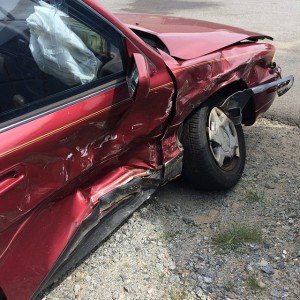Winter weather and the festive season double the risk of accidents for fleet and work drivers, says DriveTech.
 The number of casualty crashes caused by driving too fast for conditions nearly doubles from October to December according to new data released by DriveTech, part of the AA and specialist in fleet risk and safety management and driver training.
The number of casualty crashes caused by driving too fast for conditions nearly doubles from October to December according to new data released by DriveTech, part of the AA and specialist in fleet risk and safety management and driver training.
With one in three road deaths involving a vehicle being driven for work, fleet drivers cite ‘pressure to meet schedules’ as the main reason for taking risks on the road, while increased workloads, fatigue and road rage are among the other top risks at Christmas.
Up to four times more vehicles than usual take to the roads over the Christmas period, and for fleet drivers the workload increases significantly, regardless of industry and vehicle category.
With 65% of all company vehicles estimated to be involved in an incident in the next 12 months, it is a sobering statistic that 71% of UK companies do not provide regular training for drivers. Additionally, 39% of companies do not have systems or procedures in place to manager driver fatigue and almost a quarter admit that they are not fully aware of their exact requirements for managing road risk.
Work drivers are:
- 48% more likely to drive while fatigued;
- 40% more likely to tailgate;
- 40% more likely to commit undertaking errors;
- 25% more likely to commit junction errors.
Tyre performance
Driving accidents increase by 20% in winter and are much higher in December than any other month of the year. The performance of standard tyres deteriorates when the temperature drops below seven degrees. ABS systems are less effective on ice and snow, increasing stopping distances. Another major risk is rain falling on frozen surfaces, causing black ice which is hard to spot and can occur when the temperature drops between +4°C and -4°C. On a wet road, the stopping distance doubles, while in snow and ice the stopping distance can increase by up to 10 times.
Colin Paterson, Head of Marketing at DriveTech says: “We urge companies to ensure that all employees who drive for work are trained and prepared. Employees who drive on business are more likely to be killed at work than those employed as deep-sea divers or coal miners! Despite statistics demonstrating increased risks for fleet and at work drivers, less than one quarter of companies have regular training for their drivers.”
How to correctly mitigate risk
By simply expanding driver risk management approaches, companies could reduce accident rates by as much as 35%. There is an entire range of courses for fleet companies and drivers, including winter driving skills, which help equip and prepare fleet drivers, mitigate risks and prevent incidents.
This eBook will guide you through some of the key understandings you need to be able to manage driver safety effectively and, at the end, provide a series of free resources you can access to help you ensure your own driver safety management system is robust, legally compliant and in line with industry-accepted good practice.
Download this eBook from Driving for Better Business and SHP to cover:
- Why do we need to manage driver safety?
- Duty of care – a shared responsibility;
- Setting the rules with a driving for work policy;
- Managing driver safety;
- Ensuring safe vehicles;
- Safe journeys and fitness to drive;
- Record keeping;
- Reporting;
- The business benefits of good practice;
- Additional resources

 The number of casualty crashes caused by driving too fast for conditions nearly doubles from October to December according to new data released by DriveTech, part of the AA and specialist in fleet risk and safety management and driver training.
The number of casualty crashes caused by driving too fast for conditions nearly doubles from October to December according to new data released by DriveTech, part of the AA and specialist in fleet risk and safety management and driver training.